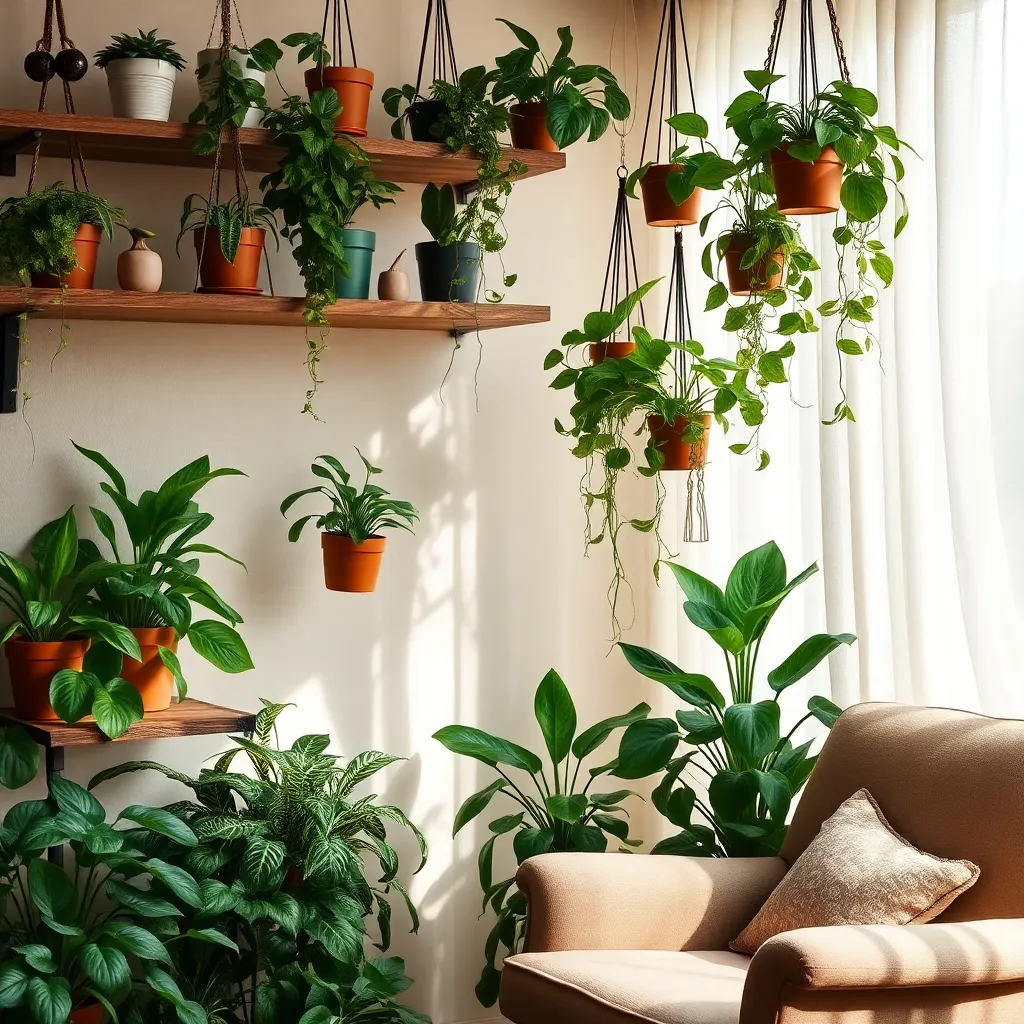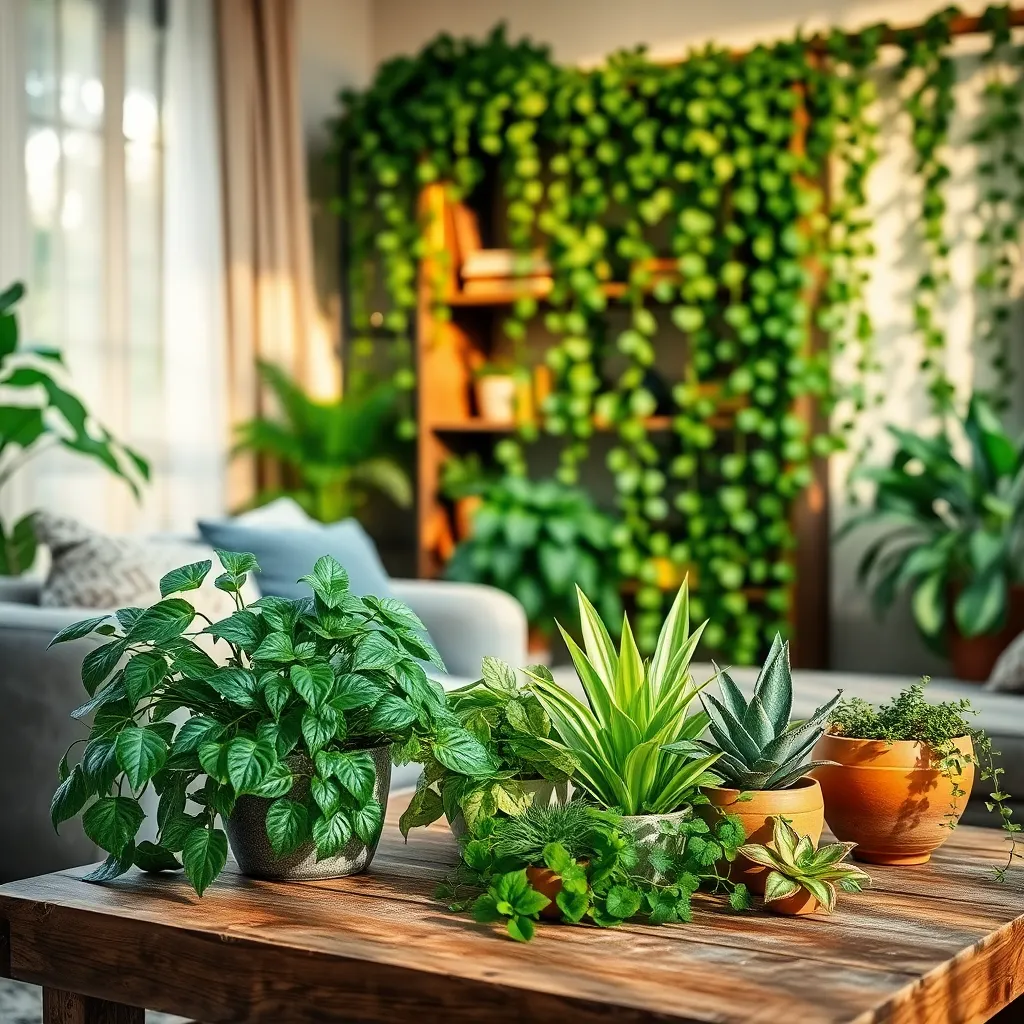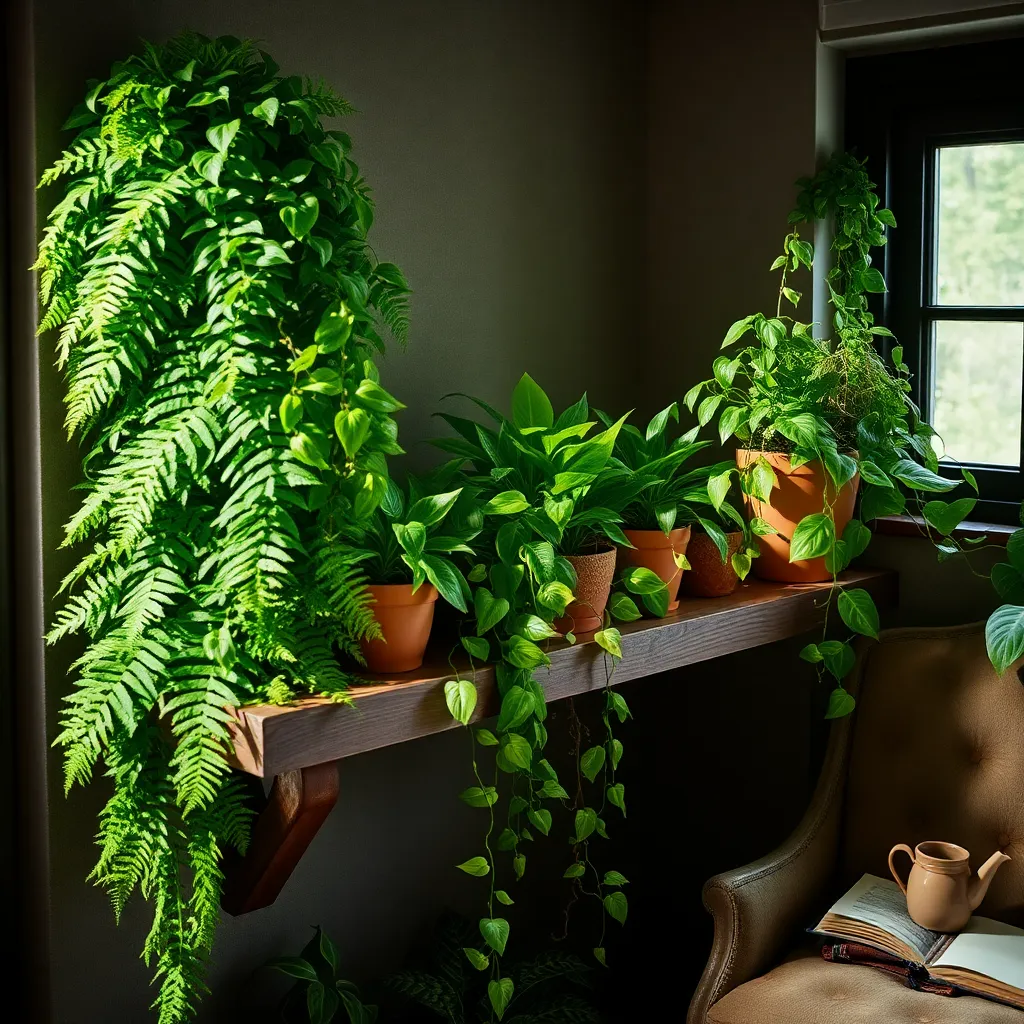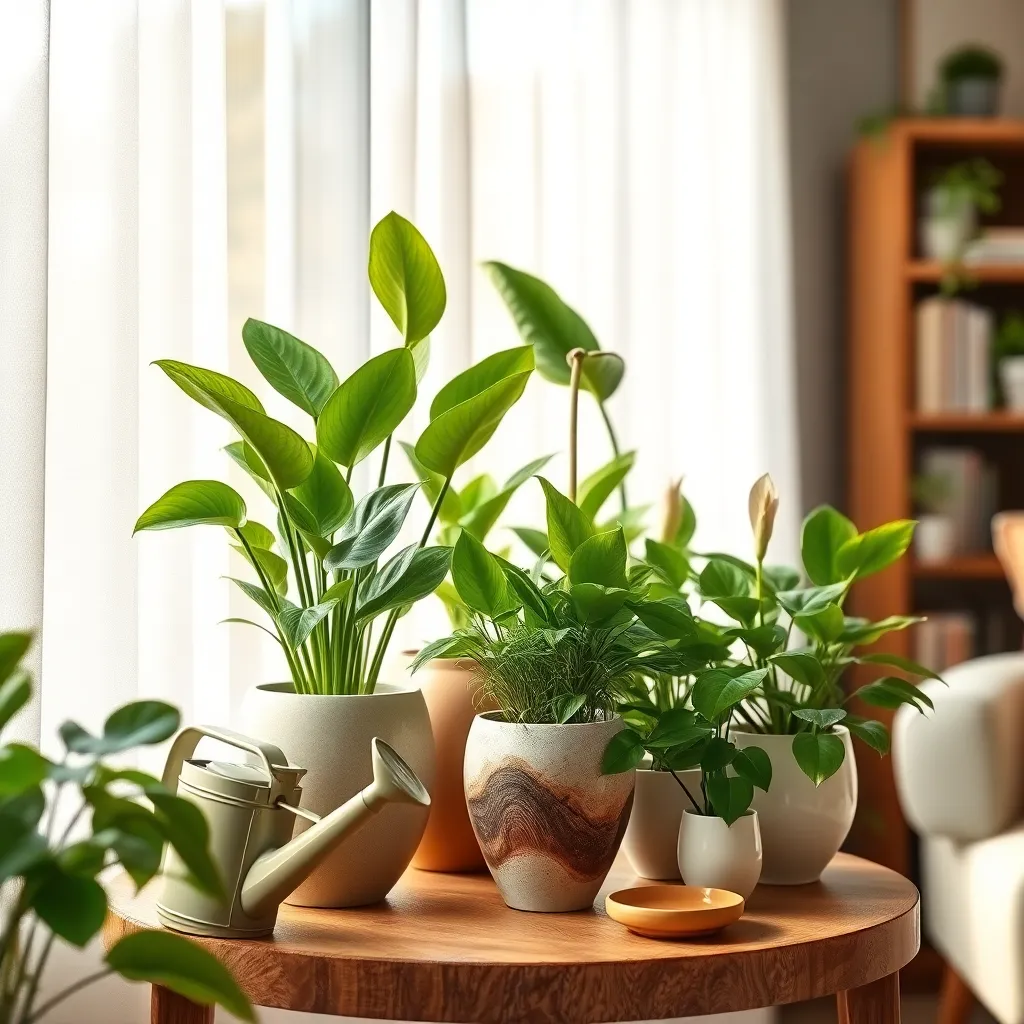Bringing a touch of greenery into your home doesn’t have to be a challenge, even if your living space is a bit on the dim side. Whether you’re just beginning your gardening journey or you’re a seasoned plant enthusiast, you’ll be pleased to know that there’s a wonderful variety of indoor plants that thrive without direct sunlight. These shade-loving beauties not only brighten up a room but also offer a breath of fresh air—literally—by improving indoor air quality and boosting your mood.
Understanding the needs of low-light plants can transform how you view your home environment. In this article, we’re diving into the world of these adaptable wonders, sharing insights on selecting the right plants for your conditions, and offering tips to keep them lush and healthy. From the resilient snake plant to the charming peace lily, you’ll discover options that are as easy to care for as they are delightful to behold. Get ready to explore a world where your plants thrive in the shadows, bringing life to the darkest corners of your home.
Understanding Low-Light Plant Needs

Low-light plants have adapted to thrive in environments with limited sunlight, making them ideal for indoor spaces with minimal natural light. Understanding their needs involves knowing how to mimic their natural habitats where indirect light is the norm.
These plants generally prefer indirect light, which can be achieved by placing them near north-facing windows or using sheer curtains to diffuse sunlight. Artificial lighting can also support their growth; consider using fluorescent or LED grow lights to supplement natural light, especially in darker corners.
When it comes to soil, most low-light plants thrive in well-draining potting mixes that retain some moisture without becoming waterlogged. A recommended mix could include peat moss, perlite, and a bit of sand to ensure adequate drainage while maintaining necessary humidity levels.
Watering practices for low-light plants are crucial, as these plants typically require less water than their sun-loving counterparts. It’s best to allow the top inch of soil to dry out between waterings to prevent root rot, which is a common issue for plants in low light.
For advanced gardeners, consider periodically rotating your plants to ensure even growth and prevent them from leaning towards a light source. Regularly dusting leaves will also maximize their ability to photosynthesize, which is particularly important when light is limited.
Top Shade-Loving Indoor Varieties

When cultivating indoor plants that thrive in low-light conditions, it’s essential to select species that naturally prefer the shade. The Snake Plant (Sansevieria) is a prime choice, known for its ability to prosper in dim environments while requiring minimal care. For beginners, ensure the Snake Plant is potted in well-draining soil to prevent root rot. Water it sparingly, allowing the soil to dry out completely between watering sessions, which might only be necessary every few weeks.
Another excellent option for low-light interiors is the Pothos (Epipremnum aureum), which is not only aesthetically pleasing but also exceptionally hardy. This plant is perfect for those new to gardening since it can survive in a variety of light conditions and only needs a drink when the top inch of soil feels dry. To encourage bushier growth, you can pinch back the stems regularly. Moreover, using a balanced liquid fertilizer once a month can promote vibrant foliage.
The ZZ Plant (Zamioculcas zamiifolia) is another resilient choice for shaded spaces, boasting glossy leaves that can brighten any room. Its robust nature makes it ideal for busy individuals, as it tolerates irregular watering and neglect. For optimal growth, plant it in a pot with a drainage hole and use a cactus potting mix. Advanced gardeners might propagate the ZZ Plant via leaf cuttings, offering a rewarding way to expand their indoor plant collection.
For a touch of elegance, consider incorporating the Peace Lily (Spathiphyllum), which is well-suited to low-light environments and adds a tropical flair with its lush leaves and delicate white blooms. Keep the soil consistently moist but not waterlogged, and mist the plant occasionally to maintain humidity levels. While it’s forgiving of less-than-perfect conditions, placing it near a north-facing window can help it bloom more prolifically. With these practical tips, even the shadiest corners of your home can be transformed into a thriving indoor oasis.
Creative Placement for Dim Spaces

Transform dim corners of your home into lush sanctuaries by choosing plants that thrive in low-light conditions. Consider placing a Snake Plant in a hallway or bathroom where natural light is scarce; it only needs watering every two to three weeks and can tolerate dry air.
Another excellent choice is the Pothos, which can add a cascading effect to bookshelves or top cabinets. This versatile plant requires watering only when the soil feels dry, making it perfect for those who might forget to water frequently.
For a touch of elegance, place a ZZ Plant in a shadowy corner of your living room or office. Its glossy leaves reflect ambient light, and it thrives on neglect, needing water just once every three to four weeks.
Advanced gardeners can experiment with grouping multiple low-light plants to create a mini indoor jungle. Use a mix of Snake Plants, Pothos, and ZZ Plants in varied heights to create visual interest, ensuring each plant has adequate room to grow.
Maintenance Tips for Low-Light Plants

Low-light plants thrive in conditions where direct sunlight is minimal, but they still require some attention to flourish. Watering is crucial; ensure the soil is consistently moist but not waterlogged, as this can lead to root rot.
Beginner gardeners should use well-draining potting mix to prevent excess moisture from accumulating. A blend that includes peat moss, perlite, or sand works well for many indoor low-light plants, helping to maintain the right moisture balance.
For more experienced gardeners, consider the humidity levels in your home. Low-light plants like ferns and peace lilies benefit from higher humidity, which can be achieved by placing a small humidifier nearby or setting the plant on a tray filled with pebbles and water.
Dust can accumulate on leaves and block the little light they do receive, so gently wipe down foliage with a damp cloth every few weeks. This not only keeps your plants healthy but also enhances their natural beauty, making them a standout feature in dimly lit spaces.
Common Mistakes to Avoid Indoors

One common mistake when caring for indoor plants that don’t need sunlight is overwatering. These plants often thrive in low-light conditions and typically require less frequent watering, so always check if the soil is dry before adding more water.
Another pitfall is selecting the wrong soil type, which can hinder plant growth. Use a well-draining potting mix specifically designed for indoor plants to ensure adequate aeration and prevent root rot.
It’s also crucial to avoid placing low-light plants in direct sunlight, even if they can tolerate low-light conditions. Direct sunlight can scorch the leaves, so position your plants a few feet away from windows or use sheer curtains to filter the light.
Beginners often forget to consider humidity levels, which can be a silent plant killer. Increase humidity by misting the plants regularly or placing a water tray nearby, especially during dry winter months.
Conclusion: Growing Success with These Plants
In our exploration of ‘Indoor Plants That Don’t Need Sunlight,’ we delved into five key relationship concepts: the importance of nurturing environments, the power of adaptability, the beauty of patience, the strength in diversity, and the value of consistent care. Just as these resilient plants thrive without direct sunlight, your relationships can flourish even in less-than-ideal conditions by embracing these principles.
As a next step, consider introducing one of these adaptable plants into your home or workspace as a reminder of these concepts. Let it serve as a symbol of your commitment to cultivating strong and enduring relationships, regardless of circumstances.
Remember, nurturing relationships require ongoing attention and care. Bookmark this article now, so you can revisit these insights whenever you need a boost in your relationship journey. By doing so, you’ll be equipped with the tools to navigate challenges and celebrate the beauty of growth in your connections.
Looking ahead, imagine the success and fulfillment in your relationships as you apply these principles. Every small action you take today is a step toward a stronger, more resilient bond tomorrow. Let’s grow together!

